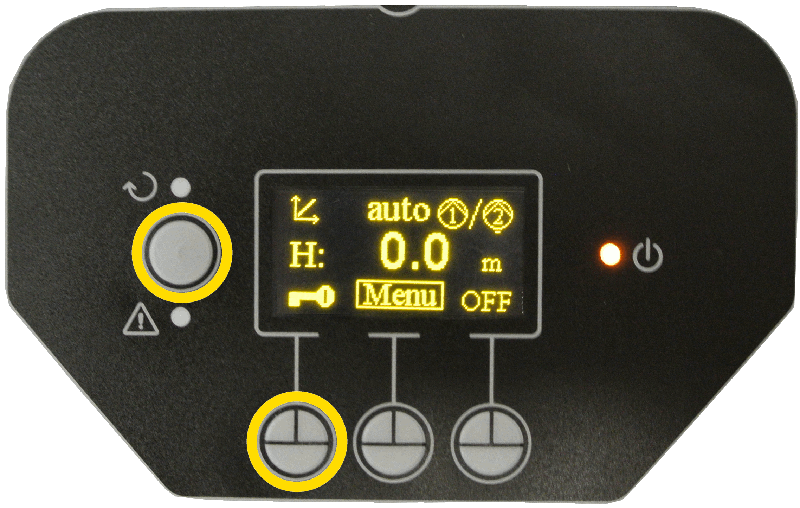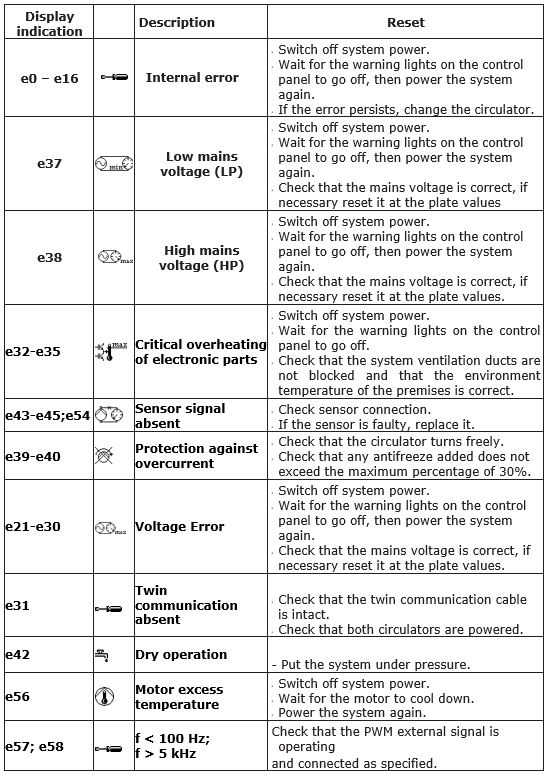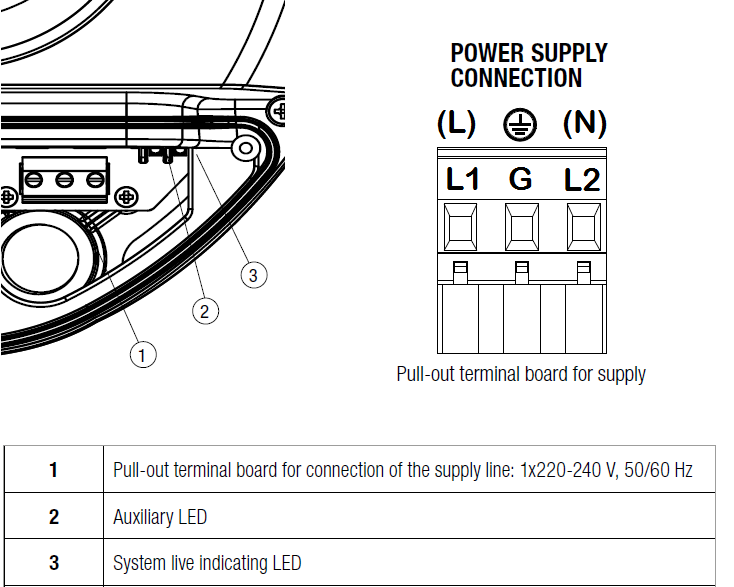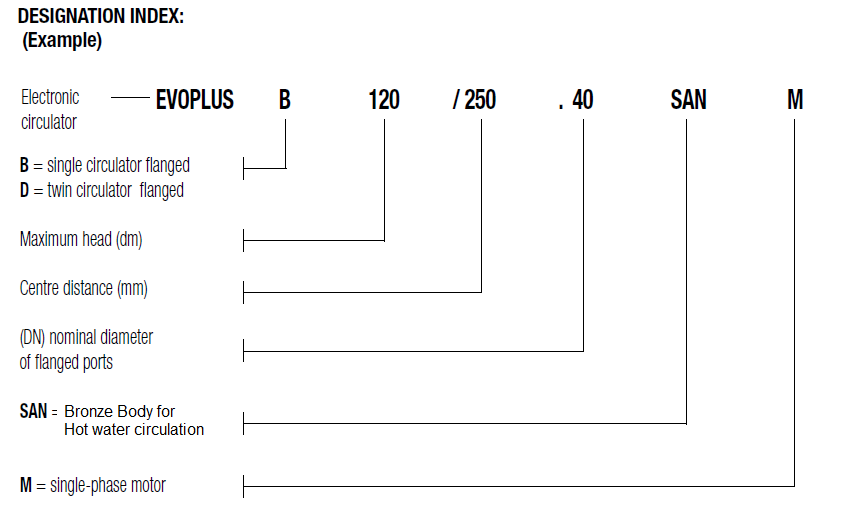The mode of operation can be chosen from six different types: ΔP-v proportional differential pressure adjustment mode, ΔP-c constant differential pressure adjustment mode, constant curve adjustment modes, constant differential pressure control mode with proportional control based on the water temperature, ΔT-c constant differential pressure control mode (function available with multifunction mode, and the economy mode.
ΔP-v proportional differential pressure adjustment mode
With ∆P-v adjustment mode, with the variation of the flow rate, the value of the delivery of the head also varies in a linear manner, from Hsetp to Hsetp/2. This adjustment is particularly indicated for the following systems:
a. Two-pipe heating systems with thermostat valves and with:
- head greater than 4 metres;
- very long circuit piping;
- valves with wide operating range;
- differential pressure regulators;
- high pressure drops in those parts of the system carrying the entirety of the water flow rate;
- low differential pressure.
b. Under-floor central heating systems with thermostatic valves and significant pressure drops in the boiler circuit.
c. Systems with primary circuit pumps with high pressure drops.
ΔP-c constant differential pressure adjustment mode
The ΔP-c adjustment mode keeps the differential pressure of the system constantly at the H set p value set, even in case of variation of the flow rate. This adjustment is particularly indicated for the following systems:
a. Two-pipe heating systems with thermostat valves and with:
- head lower than 2 metres;
- natural circulation;
- low pressure drops in those parts of the system carrying the entirety of the water flow rate;
- high differential temperature (central heating).
b. underfloor heating systems with thermostat valves
c. single-pipe heating systems with thermostat valves and calibration valves
d. Systems with primary circuit pumps with low pressure drops.
Constant curve adjustment modes
In this control mode, the circulator works based on constant speed characteristic curves. The operation curve is selected by setting the rotation speed using a percentage factor. The 100 % value indicates the maximum limit curve. The actual rotation speed may be affected by the power and differential pressure limitations of the actual circulator model. The rotation speed may be set using the display, or either a 0-10 V or PWM external signal, using the appropriate multifunction module. Control mode indicated for constant flow rate heating and air conditioning systems.
Constant differential pressure control mode with proportional control based on the water temperature (Function available with multifunction module)
This adjustment is particularly indicated for the following systems:
a. - in variable flow rate systems (two-pipe central heating systems), in which a further reduction of circulator performance is provided in line with the lowering of the temperature of the circulating liquid, in case of reduced heating demand.
b. - in constant flow rate systems (single-pipe and under-floor central heating systems), where the performance of the circulator can only be adjusted by activating the temperature influence function. It is set through the EVOPLUS control panel.
ΔT-c constant differential pressure control mode (Function available with multifunction mode)
The ΔT-c control mode keeps the pumped liquid at constant temperature, changing the flow rate to the Tsetp settable value. This adjustment is particularly indicated for the following systems:
- Under-floor heating systems.
- systems with primary circuit pumps.
- Systems with circuit pumps with heat exchanger.
- Solar energy systems with storage tanks.
- Solar panel swimming pool heating systems.
Economy Mode
The economy function can be set directly on the control panel, by setting a reduction value (f.rid), the maximum value of which can be 50%. In all the previously listed settings, the Hset value must be replaced with an Hset x f.rid.
To learn more about this you can register free for our online course Evoplus tutorial organized by D.Training, aimed at installers, plumbers or interested people. We recommend you read the Evoplus instruction manual (also available on our DNA software) for all information on use, maintenance and installation.









